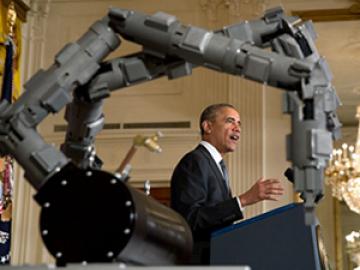Filter News
Area of Research
- (-) Advanced Manufacturing (5)
- (-) Computer Science (2)
- Biological Systems (3)
- Biology and Environment (52)
- Biology and Soft Matter (4)
- Building Technologies (5)
- Chemical and Engineering Materials (2)
- Chemistry and Physics at Interfaces (5)
- Clean Energy (68)
- Climate and Environmental Systems (4)
- Computational Biology (2)
- Computational Chemistry (4)
- Computational Engineering (1)
- Earth Sciences (1)
- Electricity and Smart Grid (1)
- Energy Frontier Research Centers (6)
- Fuel Cycle Science and Technology (1)
- Functional Materials for Energy (10)
- Fusion and Fission (15)
- Geographic Information Science and Technology (1)
- Isotopes (3)
- Materials (74)
- Materials for Computing (13)
- Materials Synthesis from Atoms to Systems (8)
- Materials Under Extremes (5)
- National Security (25)
- Neutron Data Analysis and Visualization (2)
- Neutron Science (20)
- Nuclear Science and Technology (5)
- Nuclear Systems Technology (1)
- Quantum Condensed Matter (2)
- Renewable Energy (2)
- Sensors and Controls (1)
- Supercomputing (54)
- Transportation Systems (3)
Media Contacts

Oak Ridge National Laboratory’s Innovation Crossroads program welcomes six new science and technology innovators from across the United States to the sixth cohort.

A force within the supercomputing community, Jack Dongarra developed software packages that became standard in the industry, allowing high-performance computers to become increasingly more powerful in recent decades.

Oak Ridge National Laboratory researchers recently used large-scale additive manufacturing with metal to produce a full-strength steel component for a wind turbine, proving the technique as a viable alternative to

Researchers at the Department of Energy’s Oak Ridge National Laboratory have demonstrated an additive manufacturing method to control the structure and properties of metal components with precision unmatched by conventional manufacturing processes. Ryan D...



University of Tennessee (UT)-Oak Ridge National Laboratory Governor's Chair for Advanced Manufacturing Suresh Babu will lead the University of Tennessee's effort as part of a Detroit-based Lightweight and Modern Metals Manufacturing Innovation institute announced by President Obama on Feb. 25.




